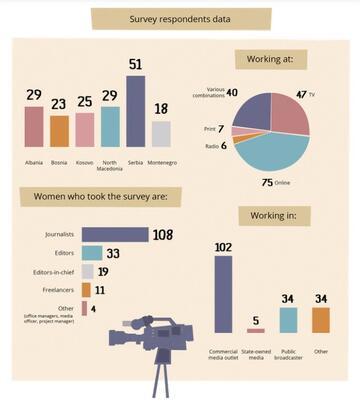
This report, and accompanying platform, is an attempt to paint a picture that is more nuanced – to address the intersecting identities and diverse experiences that actually characterize women’s media – and newsroom more specifically – participation and representation in the Western Balkans.
To supplement the interview data, an online survey, with questions related to the significant trends identified during the interview process, was distributed throughout the region – with 175 responses received.
When it comes to women journalists, prevailing narratives have focused almost exclusively on online violence and women’s vulnerability, rather than on the systems that make this type of abuse prevalent, normalized and even profitable. This narrative and lack of holistic approach have increasing significance given the reality of media as an information bottleneck for society. Similarly, when women, who are proven to create space for narratives that fall outside of mainstream dialogue, are marginalized, the negative implications for society are compounded.
Tags: Media and gender Albania North Macedonia Kosovo Serbia Montenegro Bosnia HerzegovinaThe content of this article can be used according to the terms of Creative Commons: Attribution-NonCommercial 4.0 International (CC BY-NC 4.0) . To do so use the the wording "this article was originally published on the Resource Centre on Media Freedom in Europe" including a direct active link to the original article page.

